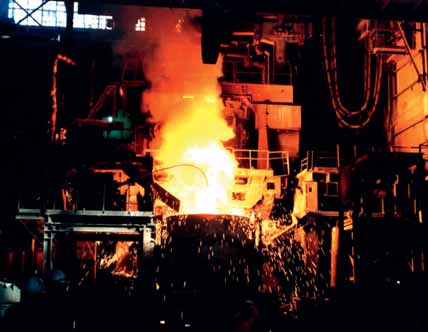Imp

orts of minerals and other dry bulk commodities into China grew strongly again during the past twelve months. Could another sharp rise occur in 2012? Many signs point to a continuing positive trend, but expectations of how vigorous it will be vary.What is clear is that this market sector is highly significant for exporters, shipowners and port operators: Chinese imports now comprise almost 30% of global seaborne dry bulk trade.
The performance of China’s economy and industrial output will have a great impact on iron ore, coal and many other commodities imported. Most forecasts suggest that economic activity probably will slow further, after a deceleration to 9.2% GDP growth in 2011. Recent IMF calculations estimated a reduction of one percentage point to 8.2% this year, followed by a gradual pick up over the next twelve months.
IRON ORE’S RAPID GROWTHAround the middle of last year, doubts about China’s iron ore imports trend intensified amid figures showing a sharp downturn during the second quarter. However, monthly quantities rapidly regained momentum in the second half. Consequently, the annual total for 2011 increased by 68mt (million tonnes) or 11%, reaching 686mt.
Steel industry output performed strongly. Crude steel production during last year as a whole was up by 9% at 695mt, despite some slackening in the second half. Pig iron production at the blast furnace mills where iron ore is consumed rose by 7%, to 630mt. These figures may be revised upwards eventually when more complete information becomes available.
Further substantial growth in China’s iron ore imports seems likely in 2012. Despite a possible further expansion of the huge quantities of ore produced by domestic mines, and relatively high stocks levels at ports, signs pointing to additional foreign buying are quite positive. Steel demand and production is widely expected to continue growing as construction and manufacturing activity remain robust.
COAL IMPORTS MOVING UPWARDSImports of coal into China weakened abruptly in the early part of last year after massive expansion over the previous twelve months. But a progressive strengthening during the remainder of
Steel furnace in China.
the period resulted in the annual 2011 total rising by 16mt (10%), reaching just over 182mt.
There was a sharp contrast between changes in coking coal imports for the steel industry, and steam coal volumes for power stations and other industries. Steam coal imports were 16% higher, at 138mt, while coking coal imports were 5% lower at 45mt. Another aspect, adversely affecting seaborne trade volumes, was a large rise in overland coking coal movements from Mongolia, which rose by one-third to 20mt.
What is the outlook for 2012? Key influences are demand from the main consuming industries, domestic coal output and internal transportation, and relative prices of domestic and foreign supplies. China’s massive domestic coal production, which apparently expanded by over 10% last year, seems set to maintain an upwards trend. The Chinese market probably will remain tight, however, amid strongly growing usage in power stations and steel plants.
GRAIN AND SOYA POSITIVESDuring the 2010/11 marketing year ending September 2011, imports of grain (wheat, corn and barley) plus soyabeans and meal into China increased only marginally by 1%, to 56mt. This result followed several years of very strong expansion. In the current 2011/12 year, based on US Dept of Agriculture calculations, a much greater 12% increase can be expected.
Last summer’s Chinese domestic harvest of grain was good, rising by 6% to a record high 316mt. But market tightness is still a feature, as consumption growth continues. Corn usage for livestock feed is especially strong, requiring some additional foreign purchases. Wheat and coarse grains imports totalled 3.6mt in 2010/11, and are forecast to more than double to 7.4mt in the current period.
Within the much larger soyabeans category, a 6% rise in imports to 56mt is predicted in the current 2011/12 year, after a 4% increase in the preceding twelve months. Last autumn’s domestic soyabean crop was lower, and consumption of soyameal in livestock feed manufacture, and soyaoil usage in food manufacturing and home cooking is growing robustly. Thesechanges point to greater buying from foreign suppliers.
PROMISING PROSPECTSOther dry bulk commodities are also prominent. Large elements include steel products, bauxite/alumina, nickel and manganese ores, and woodpulp. The outlook for these ‘minor bulk’ imports is generally favourable. However, steel products imports may not develop positively, because Chinese domestic steel mills are competing more vigorously in the high-quality products category.
A broadly favourable outlook for dry bulk imports depends on China’s economic growth staying robust. Despite some fears of a ‘hard landing’ for the economy ahead, recent predictions are mostly encouraging, indicating only limited further slowing.
Nevertheless, a more severe setback for the advanced countries than currently envisaged (possibly caused by greater eurozone problems, or surging oil prices, or both) could have adverse effects on China.
One reason for optimism is that great emphasis in China is still being placed on industrial developments which imply support for raw materials consumption and import demand. Large-scale infrastructure projects are still a key part of plans. Also, although the programme for building a vast number (36 million) of social housing units seems to have faltered, compared with the original timetable, it appears set to continue.
Richard Scott